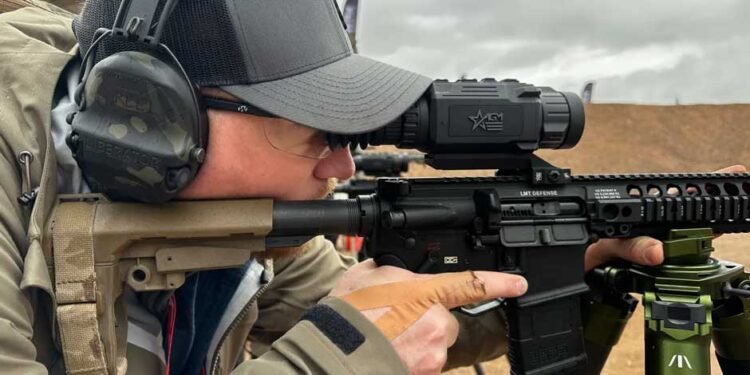Both hunters and tactical shooters rely on thermal rifle scopes as essential tools in the field. But that doesn’t mean every model is going to offer the same level of performance.
Shooting enthusiasts know just how much the AGM Rattler V2 outshines its competitors thanks to its compact design, high-quality thermal imaging, and user-friendly features – all at a competitive price.
How does the Rattler V2 compare to other thermal scopes on the market? What makes it a standout choice?
Thermal Imaging and Refresh Rate
Thermal scopes like the Rattler V2 use sensor resolution and refresh rates to provide clear, lag-free images. If your device has a lower refresh rate, you’ll have a harder time tracking fast-moving targets, which can lead to missed shots.
The AGM Rattler V2 excels compared to the competition in a few ways:
- 256, 384, or even 640 thermal resolution delivers sharp imaging so you can detect animals in low-visibility conditions.
- A 50 Hz refresh rate is there to reduce motion blur. That makes it easier to track moving targets.
- With detection ranges of more than 1,000 yards, hunters can spot game from long distances.
Compared to the Rattler V2, many other competing thermal scopes feature lower refresh rates of only about 30 Hz to 40 Hz. That can result in choppy image rendering, as well as delayed tracking. But the AGM Rattler V2 has smoother imaging, so users can keep a real-time view of their environments.
Compact, Lightweight, and Durable
Anyone who’s ever used a thermal scope knows the device should boost your rifle’s performance, not weigh it down. You might have found competing scopes to be bulky as they add unnecessary weight. That makes them harder to handle in the field.
The AGM Rattler V2 is different. It’s lighter than many competing models – weighing in at just over one pound. Plus, its compact design is easy to mount without negatively affecting your rifle’s balance.
The Rattler V2 also boasts a durable aluminum housing, so it’s built to withstand harsh outdoor conditions. Its IP67 water resistance protects the device against dust, rain, and moisture.
It’s not uncommon for hunters to deal with rugged terrain and unpredictable weather. Some heavier scopes can become a burden in the field. Luckily, the AGM Rattler V2 is designed to use all day without fatigue.
Dual-Use Functionality
Many of the thermal scopes on the market serve just one function. They’re either a standalone optic or a clip-on device. But the AGM Rattler V2 does both, which gives shooters more flexibility.
Indeed, the Rattler V2 functions as a standalone thermal rifle scope. It also converts into a clip-on device to use with standard optics. Its quick-detach mount even allows for faster transitions between setups.
Most other competitors require hunters to choose between dedicated scopes or clip-on thermal devices. That limits their adaptability in the field. Fortunately, the Rattler V2 eliminates that restriction.
User-Friendly Interface
Making quick adjustments on many thermal scopes can be a frustrating process because of their complex menus. But the AGM Rattler V2 simplifies these endeavors with its intuitive controls and clear menu layout.
The Rattler V2 is so user-friendly to operate it, you can sight it in by following just a few simple steps:
1. Use a Heat Source
Something as simple as hand warmers or aluminum tape over a flashlight can create an easy thermal target for sighting in your Rattler V2.
2. Calibrate for Accuracy
Sharpen your image by performing a non-uniformity correction (NUC).
3. Adjust Reticle
You can choose from multiple reticle settings and options for different environments.
4. Fine-Tune Digital Zoom
The AGM Rattler V2 features a digital zoom of up to 8x so you can align shots for longer distances.
Why Choose the AGM Rattler V2?
If you’re a hunter looking for a reliable, high-performance thermal scope, then the AGM Rattler V2 is a top-tier choice you should consider. You can learn even more about its capabilities – as well as plenty of purchase options.
Don’t miss out on the chance to upgrade your gear today!












